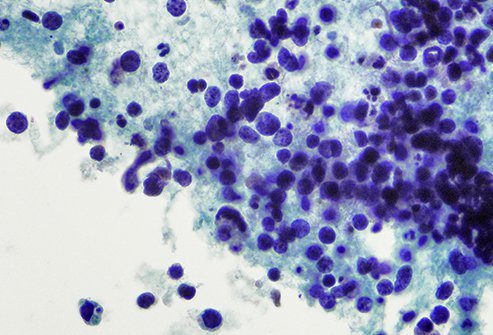What Is Lung Adenocarcinoma?

Lung adenocarcinoma is a type of non-small lung cancer that forms in the cells that normally secrete lubricating substances such as mucus. This type of lung cancer occurs mainly in current or former smokers. It may also be seen in nonsmokers. Moreover, lung adenocarcinoma is the most common form of cancer in women and people younger than 45 years old.
Lung adenocarcinoma is the leading cause of cancer deaths in the United States and represents 40 percent of all lung cancers. Eventually, the tumor cells may spread to other parts of the body including
- Lymph nodes around and between the lungs
- Liver
- Bones
- Adrenal glands
- Brain
Who is at risk of lung adenocarcinoma?
As with any cancer, your risk of adenocarcinoma doubles if you have any of the following risk factors
- Cigarette smoking
- Second-hand smoke
- Family history of lung cancer
- Breathing tobacco smoke
- Exposure to radon gas
- Exposure to asbestos
- Exposure to cancer-causing agents such as uranium, arsenic, vinyl chloride, nickel chromates, coal products, mustard gas, chloromethyl ethers, gasoline and diesel exhaust
- Particle pollution
- Drinking water contaminated with arsenic
- Previous radiation therapy to the chest
What are the symptoms of lung adenocarcinoma?
Most people with lung adenocarcinoma in the early stages do not exhibit any symptoms. Ideally, lung adenocarcinoma is detected on a chest X-ray or a computed tomography (CT) scan performed for some other medical reason. All lung cancers, including adenocarcinoma, present with similar symptoms
- Persistent cough
- Coughing up blood or mucus
- Wheezing
- Trouble swallowing
- Hoarseness
- Weight loss
- Poor appetite
- Shortness of breath
- Trouble breathing
- Chest pain
- Fever
- Unintentional weight loss
- Bone pain
- Headache
How is lung adenocarcinoma diagnosed?
The physician diagnoses lung adenocarcinoma based on a patient’s medical history and symptoms. Other tests deployed for diagnosis include
- Imaging tests including X-rays, magnetic fields, sound waves or radioactive substances
- Positron emission tomography (PET) scan
- Bone scan to check the spread into the bones
- Sputum cytology
- Thoracentesis (a procedure to remove fluid or air from around the lungs)
- Needle biopsy
- Bronchoscopy (a test to view the lung airways and diagnose lung disease)
- Blood tests
- Mediastinoscopy (a tube-like instrument is used to diagnose lung cancer)
- Thoracotomy (a larger incision in the chest to remove tissue)
How is lung adenocarcinoma treated?
Treatment depends on the stage of lung adenocarcinoma and lung cancer treatment goals. Treatment options include
- Surgery: This involves the removal of the cancerous tissue.
- Radiation therapy: This involves the use of high-energy rays to kill cancer.
- Chemotherapy: Special medications are used to kill or shrink cancer.
- Targeted therapy: This involves using drugs to block the growth and spread of cancer cells.
- Immunotherapy: This involves using medication that boost immunity to fight cancer cells.
- Complementary and alternative lung cancer therapies: These are treatments other than standard cancer treatments.
